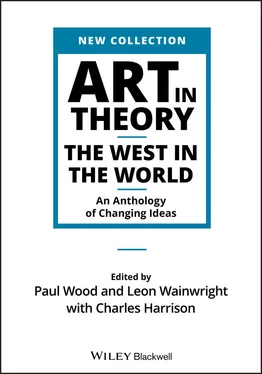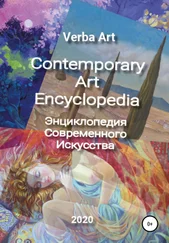(b) in New Zealand, March 1770
The Natives of this Country are a strong raw boned well made Active people rather above than under the common size especialy the men, they are all of a very dark brown Colour with black hair, thin black beards and white teeth and such as do not disfigure their faces by tattowing &c ahave in general very good features….
Many of the old and some of the middle aged men have thier faces mark’d or tattow’d with black and some few we have seen who have had their buttocks thighs and other parts of their bodies mark’d but this is less common. The figures they mostly use are spirals drawn and connected together with great nicety and judgement; they are so exact in the application of these figures that no difference can be found between the one side of the face and the other if the whole is mark’d, for some have only one side and some a little on both sides, hardly any but the old men have the whole tattowd….
The women inlay the colour of black under the skins of their lips and both sexes paint their faces and bodies at times more or less with red oker mix’d with fish oyle.
IIB4(iii) James Cook On the people of Australia, April to August 1770
Cook is today best known – either positively or negatively, depending on your point of view – for his ‘discovery’ of Australia. In fact earlier navigators, including the Dutch Abel Tasman and the British William Dampier in the seventeenth century had already stumbled upon its west and north coasts (cf. IB13). It even had a name, New Holland (cf. IIB2). Cook, in his search for Terra Australis , after sailing south from Polynesia and circumnavigating New Zealand/Aotearoa, headed west, and eventually he too stumbled over Australia, this time its east coast. Once again, he was accompanied by Tupaia, but this time his guide was not able to translate as he had done on their visits to the various Polynesian islands and New Zealand. The indigenous Australians were a different people from the inhabitants of Oceania. For the present anthology, Cook’s observations are of interest for two things. First, there are his notes on Aboriginal material culture, such as he could observe it: principally temporary bark shelters, ornament and body painting. Second, there are his echoes of Dampier from a century before: the sheer otherness of the inhabitants of Australia, their apparent lack of social organization, such as existed in Polynesia, and their rejection of any contact with the Europeans. Both of these led him to reflections upon the ‘state of nature’, and – tellingly – to the prospects for colonization held out by this apparently empty land; empty, that is, of human inhabitants possessed of recognizable social hierarchy and the agriculture associated with settled existence. The First Fleet, with its convict‐colonists and its terra nullius , arrived in 1787. This extract is taken from The Journals of Captain James Cook on his Voyages of Discovery: The Voyage of the Endeavour 1768–1771 , edited by J. C. Beaglehole, Cambridge University Press, published for the Hakluyt Society, 1968–1969, vol. 1, pp. 304–6, 312, 395–7 and 399.
[April 1770] … SUNDAY 29 th . … Saw as we came in on both points of the bay Several of the natives and a few hutts, Men, women and children on the south shore abreast of the Ship, to which place I went in the boats in hopes of speaking with them accompaned by M rBanks D rSolander and Tupia; as we approached the shore they all made off except two Men who seemd resolved to oppose our landing. As soon as I saw this I orderd the boats to lay upon their oars in order to speake to them but this was to little purpose for neither us nor Tupia could understand one word they said. […]
MONDAY 30 th . As soon as the wooders and watere[r]s were come on board to dinner 10 or 12 of the natives came to the watering place and took away there canoes that lay there but did not offer to touch any one of our Casks that had been left ashore, and in the after noon 16 or 18 of them came boldly up to within 100 yards of our people at the watering place and there made a stand. M rHicks who was the officer ashore did all in his power to entice them to him by offering them presents &c abut it was to no purpose, all they seem’d to want was for us to be gone. […]
TUESDAY 1 st . [May] … The Natives do not appear to be numberous neither do they seem to live in large bodies but dispers’d in small parties along by the water side; those I saw were about as tall as Europeans, of a very dark brown colour but not black nor had they wooly frizled hair, but black and lank much like ours. No sort of cloathing or ornaments were ever seen by any of us upon any one of them or in or about any of their hutts, from which I conclude that they never wear any. Some we saw that had their faces and bodies painted with a sort of white paint or Pigment. Altho I have said that shell fish is their chief support yet they catch other sorts of fish some of which we found roasting on the fire the first time we landed … However we could know but very little of their customs as we never were able to form any connections with them, they had not so much as touch’d the things we had left in their hutts on purpose for them to take away. […]
[August 1770] The Natives of this Country are of a middle Stature straight bodied and slender‐limbd, their skins the Colour of Wood soot or of a dark Chocolate, their hair mostly black, some lank and others curled, they all wear it crop’d short, their Beards which are generaly black they like wise crop short or singe off. Their features are far from being disagreeable and their Voices are soft and tunable. They go quite naked both Men and women without any manner of Cloathing whatever, even the Women do not so much as Cover their privities. […] They wear as Oraments Necklaces made of shells, Bracelets or hoops about their arms, made mostly of hair twisted and made like a cord hoop, these they wear teight about the uper parts of their Arms, and some have girdles made in the same manner. The men wear a bone about 3 or 4 Inches long and a fingers thick, run through the Bridge of the nose, which the Seamen call’d a sprit sail yard; they like wise have holes in their ears for Earrings but we never saw them wear any, neither are all the other oraments wore in common for we have seen as many without as with them. Some of those we saw on Posession Island wore Breast Plates which we suppose’d were made of Mother of Pearl shells. Many of them paint their bodies and faces with a sort of White paist or Pigment, this they apply different ways each according to his fancy. […]
Their Houses are mean small hovels not much bigger than an oven, made of peices of Sticks, Bark, Grass &c a, and even these are seldom used but in the wet seasons for in the dry times we know that they as often sleep in the open air as any where else. We have seen many of their Sleeping places where there has been only some branches, or peices of bark ris about a foot from the ground on the windward side. Their Canoes are as mean as can be conceived. […]
We are to Consider that we see this Country in the pure state of Nature, the Industry of Man has had nothing to do with any part of it and yet we find all such things as nature hath bestow’d upon it in a flourishing state. In this Extensive Country it can never be doubted but what most sorts of Grain, Fruits, Roots &c aof every kind would flourish here were they once brought hither, planted and cultivated by the hand of Industry, and here are Provender for more Cattle at all seasons of the year than ever can be brought into this Country. […]
From what I have said of the Natives of New‐Holland they may appear to some to be the most wretched people upon Earth, but in reality they are far more happier than we Europeans; being wholy unacquainted not only with the superfluous but the necessary Conveniencies so much sought after in Europe, they are happy in not knowing the use of them. They live in a Tranquillity which is not disturb’d by the Inequality of Condition: The Earth and sea of their own accord furnishes them with all things necessary for life, they covet not Magnificent Houses, Houshold‐stuff &c a, they live in a warm and fine Climate and enjoy a very wholsome Air, so that they have very little need of Clothing and this they seem to be fully sencible of, for many to whome we gave Cloth &c ato, left it carlessly upon the Sea beach and in the woods as a thing they had no manner of use for. In short they seem’d to set no Value upon any thing we gave them, nor would they ever part with any thing of their own for any one article we could offer them; this in my opinion argues that they think themselves provided with all the necessarys of Life and that they have no superfluities.
Читать дальше












